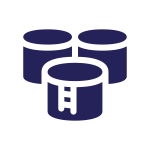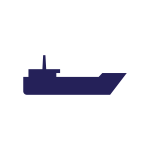Who is responsible for an oil spill in Prince William Sound?
According to law, whoever spills oil must clean it up. While sounding simple, it can be quite complicated.
First, you must figure out who is responsible, what they are responsible for, and whether Alaska or Federal law applies.
Cleaning up the mess
 Anyone who moves or stores crude oil in Alaska must have an approved spill contingency plan. These plans describe in detail how they plan to:
Anyone who moves or stores crude oil in Alaska must have an approved spill contingency plan. These plans describe in detail how they plan to:
- keep the substance contained,
- control the substance if it escapes containment, and
- clean it up if it is not contained or controlled.
The person or entity who creates the plan, referred to as the “plan holder,” is legally responsible for putting the plan into action. The plan holder must ensure a certain amount of clean up equipment and trained personnel are always nearby and ready to respond.
In Prince William Sound
If oil is spilled from either the Valdez Marine Terminal, or any tanker shipping oil from the terminal, Alyeska’s Ship Escort/Response Vessel System, or SERVS, responds immediately.

Spill from the terminal
The terminal is jointly owned by three companies: Hilcorp/Harvest Alaska, ConocoPhillips, and ExxonMobil. These companies jointly fund Alyeska Pipeline Service Company, who operates the pipeline and terminal, and SERVS. SERVS manages the cleanup of any spills from the terminal on behalf of the owners.
 Spill from a tanker
Spill from a tanker
If a tanker spills oil or fuel in Prince William Sound, SERVS manages the spill for the first three days. This allows time for the tanker’s owner company to get their incident management team on the scene.
At the end of the first three days, cleanup becomes the responsibility of the contingency plan holder. SERVS remains available to support the cleanup.
Paying for the cleanup and damages
The responsibility to clean up a spill is separate from financial liability. The liable party must pay for:
- cleanup activities
- financial damages to businesses or individuals
- injuries
- environmental restoration
Federal law places this liability on the owner or operator of the facility or vessel. Alaska’s law is similar; however, the state also holds the oil’s owner liable. These liabilities can vary and may be decided by a court or settlement agreement.
How much do they have to pay?
Alaska law and Federal law differ slightly.
Alaska
Alaska law does not limit the amount a liable party might have to pay for cleanup and damages. However, there is a limit on the amount they must plan to pay. That amount depends on how much oil they can move at once.
This ability to pay can be proven in several ways. Insurance is the most common.
Federal
Federal law places limits on the amount the liable party might have to pay. This limit is based on the size of the tanker. However, the limit does not apply if the incident is caused by gross negligence, willful misconduct, or violation of federal regulations.
What if the spiller can’t pay?
If the worst happens and the spiller can’t or doesn’t take care of their responsibilities, there is help available.
- The Oil Spill Liability Trust Fund helps cover costs and damages. More about this fund at: [link]
- Alaska has a separate fund to help cover the State’s costs. More about this fund at: [link].
More details
At their May 2021 meeting, the Council’s Board of Directors heard a detailed explanation about liabilities for a spill. Watch the presentation from attorney Breck Tostevin on the Council’s YouTube channel: